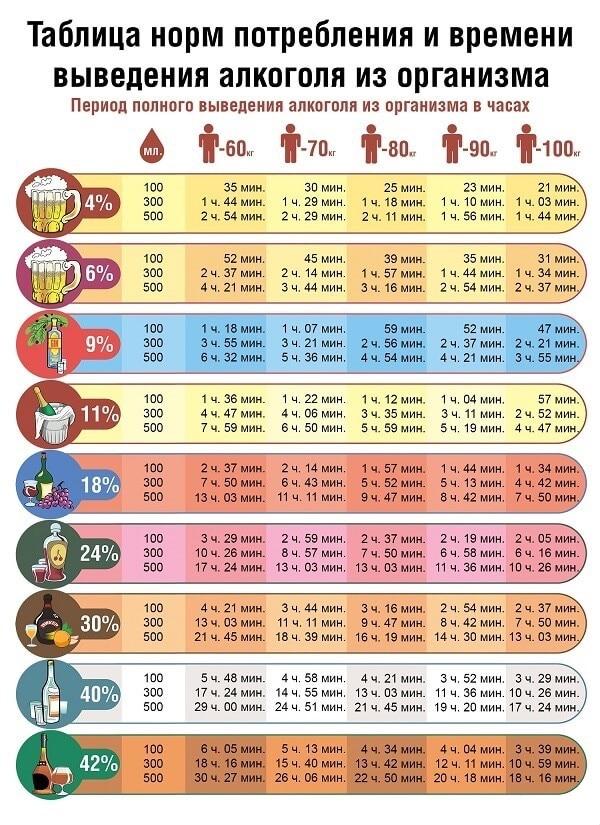
How to live in a new climate?
There's a bright side to everything - at least that's what Apple thinks, saying that as the climate worsens, the iPhone's usefulness in face-to-face interactions will instill a greater sense of brand loyalty in customers. So Apple saw the positive side of warming.
"As dramatic weather events become more frequent, immediate and ubiquitous availability of rugged, portable devices ready for use in situations where transportation, power, and other services may be temporarily unavailable," Apple wrote in the release.
iPhone in a climate-sensitive case
The company is counting on other benefits as well. With rising energy prices, customers are looking for energy-saving products, and this, according to the Cupertino giant, is one of the main advantages of its proposal.
Therefore, Apple sees climate change as a positive aspect, although some services offered by the iPhone may, however, suffer - for example, the accuracy of navigation and clocks. Melting ice in the Arctic is changing the entire system of water distribution on the planet, and some scientists believe that this affects the Earth's axis of rotation. This is due to the shift of the magnetic pole to the east. All this can lead to a faster rotation of the planet around its axis. In the year 2200, the day may become shorter by 0,012 milliseconds. It is not known exactly how this will affect people's lives.
In general, life in a world affected by climate change looks catastrophic. However, even under the worst-case scenario, we are unlikely to face complete annihilation. If there are serious doubts about whether a person can stop adverse events (even if he really wants to, which is not always reliable), one should start getting used to the idea of a “new climate normality” - and think about survival strategies.
It's warmer here, it's drought there, there's more water here.
It's already noticeable extension of the growing season in temperate zones. Nighttime temperatures rise faster than daytime ones. It can also disrupt the vegetation of, for example, rice. change the rhythm of a person's life i accelerate warmingbecause the normally warm Earth cools down at night. They're getting more and more dangerous heat waves, which in Europe can kill tens of thousands of people a year - according to estimates, in the heat of 2003, 70 thousand people died. people.
On the other hand, satellite data show that it is getting warmer. makes the earth greenerwhich is most noticeable in previously arid regions. On the whole, this is not a bad phenomenon, although at present it seems undesirable in some areas. In Australia, for example, more vegetation consumes scarce water resources, disrupting the flow of rivers. However, it may also be that eventually the climate will change to a more humid one. will increase the total amount of water in the circuit.
Northern latitudes, such as Siberia, could theoretically turn into areas of agricultural production due to global warming. However, it is worth remembering that the soil in the arctic and border regions is very poor, and the amount of sunlight reaching the earth in summer will not change. The warming also raises the temperature of the arctic tundra, which then releases methane, a very strong greenhouse gas (methane is also emitted from the seafloor, where it is trapped in crystals called clathrates).
The islands of the Maldives archipelago are among the most vulnerable due to global warming
Increase in plankton biomass in the North Pacific, this has positive, but possibly negative, implications. Some species of penguins may increase in numbers, which is not good for the fish, but for what they eat, yes. Again and again. Thus, in general, as a result of warming, causal chains are set in motion, the final consequences of which we are not able to predict.
Warm winters will mean for sure fewer deaths due to the cold, especially among groups that are particularly sensitive to its effects, such as the elderly. However, these same groups are also at risk of being adversely affected by additional heat, and the number of deaths from heatwaves is increasing. It is also widely believed that a warmer climate will contribute to migration pathogenic insectssuch as mosquitoes and malaria will appear in completely new places.
If due to climate change sea level will rise by 2100 meters by year 3, this will mean, first of all, mass migrations of people. Some believe that eventually the level of the seas and oceans may rise to 20 m. Meanwhile, it is estimated that a rise of 1,8 m means the need to relocate 13 million people in the US alone. The consequence will also be huge losses - for example. value of lost property in real estate it will be almost 900 billion US dollars. if Himalayan glaciers will melt foreverthat will appear by the end of the century water problem for 1,9 billion people. The great rivers of Asia flow from the Himalayas and the Tibetan plateau, supplying water to China and India, as well as many smaller countries. Islands and marine archipelagos such as the Maldives are primarily at risk. Rice fields right now filled with salt waterwhich destroys the harvest. Sea water pollutes rivers because it mixes with fresh water.
Another negative consequence that researchers see is rainforest drying up, which releases additional CO into the atmosphere2. Changes in pH, ie ocean acidification. This process occurs due to the absorption of additional CO.2 into the water and could have a severe destabilizing effect on the entire ocean food chain. As a result of whitening and diseases caused by warming waters, the coral extinction risk.
Areas in South America are threatened by desiccation to varying degrees (in red the most), according to Tropical Rainfall Measuring Mission satellite surveys
Some of the scenarios in the Intergovernmental Panel on Climate Change (IPCC) AR4 report also indicate likely economic effect changing of the climate. The loss of agricultural and residential land is expected to disrupt global trade, transport, energy and labor markets, banking and finance, investment and insurance. This would destroy economic and social stability in rich and poor countries alike. Institutional investors such as pension funds and insurance companies will face serious difficulties. Developing countries, some of which are already involved in armed conflicts, may face new long-standing disputes over water, energy or food, which will seriously undermine their economic growth. It is generally recognized that the adverse effects of climate change will be felt mainly in countries least prepared to adapt, both socially and economically.
Most of all, however, climate scientists fear avalanche change with boost effect. For example, if the ice sheets melt too quickly, the ocean absorbs much more heat, preventing winter ice from rebuilding, and the system enters a constant cycle of depletion. Other concerns are related to the disruption of sea currents or the cycles of the Asian and African monsoons, which could affect billions of lives. So far, no signs of such an avalanche-like change have been found, but fears are not decreasing.
Is warming favorable?
However, there are those who believe that the overall balance of climate change is still positive and will remain so for some time to come. A similar conclusion was made many years ago by Prof. Richard Tol of the University of Sussex - shortly after he analyzed the results of studies on the effects of future climate events. In an article published in 2014 as a chapter of the book How Much Have Global Issues Cost the World?, edited by Bjorn Lomborg, Chair of the Copenhagen Consensus, Prof. Tol argues that climate change has contributed to improving the well-being of people and the planet. However, this is not a so-called climate denialist. He does not deny that global climate change is taking place. In addition, he believes that they will be useful for a long time to come, and after 2080, they will probably only begin to harm the world.
However, Tol calculated that while the beneficial effects of climate change account for 1,4% of global economic production, and by 2025 this level will increase to 1,5%. In 2050, this benefit will be lower, but it is expected to be 1,2% and not become negative until 2080. If the global economy continues to grow at a rate of 3% a year, by then the average person will be about nine times richer than he is today, and low-lying Bangladesh, for example, will be able to afford the same flood protection that the Dutch have today.
According to Richard Tol, the main benefits of global warming are: fewer winter deaths, lower energy costs, higher agricultural yields, possibly less drought, and possibly more biodiversity. According to Toll, it is cold, not heat, that is the greatest killer of mankind. Thus, he does not agree with the currently popular statements of scientists, also pointing out that a higher concentration of carbon dioxide acts, among other things, as an additional fertilizer for vegetation. He notes the previously mentioned expansion of green space in some still dry places, such as the African Sahel. Of course, in other cases, drying out is not mentioned - not even in rainforests. However, according to studies he cites, the yield of some plants, such as corn, due to higher CO2 are growing.
Indeed, scientific reports are emerging of unexpected positive effects of climate change on, for example, cotton production in northern Cameroon. A projected temperature increase of 0,05°C per year shortens growing cycles by 0,1 days per year without adversely affecting yields. In addition, the fertilizing effect of CO enrichment2 will increase the yield of these crops by about 30 kg per hectare. Precipitation patterns are likely to change, but as many as six regional models used to create future weather patterns do not predict a decrease in precipitation - one model even suggests an increase in precipitation.
However, not everywhere forecasts are so optimistic. In the US, wheat production is reported to be declining in warmer regions such as north-central Texas. In contrast, cooler areas such as Nebraska, South Dakota, and North Dakota have experienced significant growth since the 90s. Prof. optimism. So Tola is probably not justified, especially given all the available data.
The aforementioned Bjorn Lomborg has been drawing attention for many years to the disproportionate costs of combating global warming to the possible consequences. In 2016, he said on CBS television that it would be good to see the positive impacts of climate change, even if the negatives outweigh them, and come up with more innovative ways to deal with the negatives.
- - He said -.
Climate change can certainly have some benefits, but they are likely to be unevenly distributed and balanced, or outpaced by negative impacts. Of course, any comparisons of specific positive and negative effects are difficult, also as they will vary by location and time. Regardless of the scenario, people will have to demonstrate what has always been an advantage in the history of the evolution of the world - ability to adapt and survive in new conditions of nature.

